Eric The Red West 2016 week 1
Dinosaur Dreaming at Eric the Red West 2016
Week One
The Dinosaur Dreaming annual dig commenced on Saturday 6th February at a remote location called Eric the Red West, on the Otway Coast not far from the Cape Otway lighthouse. The location got its name because it is approximately 300m west of a fossil locality, which had been found approximately 30 years earlier near Point Franklin, at the site of the "Eric the Red" ship's anchor. The discovery of a partial dinosaur skeleton in 2005 led to the designation of this new locality as Eric the Red West to distinguish it from the original site.
The 2016 dig is the third annual dig at Eric the Red West after excavations at the Flat Rocks site near Inverloch were suspended in 2013. Annual excavations at Inverloch began in 1994 and it was decided that after 20 years working at the one site it was time to explore new horizons. The fossil layer at the Flat Rocks site has not been exhausted but it was becoming increasingly more difficult to access the layer between high tides. The Eric the Red West site is located just above the high tide mark, which means that the crew do not have to leave the site when the tide comes in as they had to do at the Flat Rocks site.
Since the discovery of the partial dinosaur skeleton in 2005, many more fossil bones have been collected from the hard sandstone rock, including evidence of three different dinosaurs, pterosaurs, lungfish, turtles and mammals. In 2015 two mammal jaws were discovered that caused a large amount of excitement, particularly for Dinosaur Dreaming head researcher Tom Rich, who is an expert on fossil mammals. It is Tom's fervent hope that more evidence of mammals will be found this field season and as week one draws to a close his wish may have already been granted.
Twenty-six volunteers arrived at Bimbi Park - Camping under koalas campground at the start of week one, ready and eager to discover a new treasure trove of fossils. The weather was kind and they quickly developed a routine which set them up for the start of each day on site. First come the morning warming-up exercises. This may sound a little strange but finding fossil bones in hard sand stone is quite laborious. It involves sitting on a small stool (if you are lucky) or a hard upturned bucket (if you are not so lucky) for many hours breaking large chunks of fossiliferous rock into small chunks of fossiliferous rock. So some good stretching exercises before you commence is beneficial.
It may take hours or sometimes a day or two before you find your first bone and the longer it takes the more you begin to doubt if you really know what you are looking for. Every volunteer is trained on how to identify what fossil bone looks like and it is not as easy as it sounds. When you are looking for fossils that are as tiny as a mammal jaw or a single dinosaur tooth you cannot afford to let your mind wander. The digger's best friend is their hand lens, which magnifies what they are looking at by times 10. Apart from fossil bones in the rock there are also bits of coal and mud clasts, which when iron-stained can look suspiciously like fossil bone. So it is essential that the diggers check every suspicious looking cross-section as they break the rock down and if they are not sure, there are plenty of experienced crew on hand to assist them.
The excitement over finding your first fossil bone for the season, particularly for new volunteers is an adrenaline rush. Everyone gets excited when something special is found and there is always the kudos of having your grinning photo displayed on the Dinosaur Dreaming blog proudly holding up your great find. It is very rare that a volunteer will leave at the end of their week having not found any fossils.
The results of the first week of the Eric the Red West 2016 dig reveal a total of 180 catalogued fossils, which include one ornithopod dinosaur mandible (lower jaw bone) and three possible ornithopod dinosaur maxillae (upper jaw bone), as well as five isolated teeth - four ornithopod dinosaur teeth and one plesiosaur tooth.
A number of vertebrae (back bones) were found as well as some dinosaur limb bones. As the bones are found by breaking them as the rock is broken down, then identification can only be made on the cross-section which is exposed in the rock. Sometimes the fossil bone is easily identified by its cross-section, but sometimes the identification of the bone must wait until the specimen is prepared in Museum Victoria's Vertebrate Palaeontology laboratory by the removal of the rock from around the bone.
Next week: Tune in again to find out what great discoveries were made in week 2 at Eric the Red West.
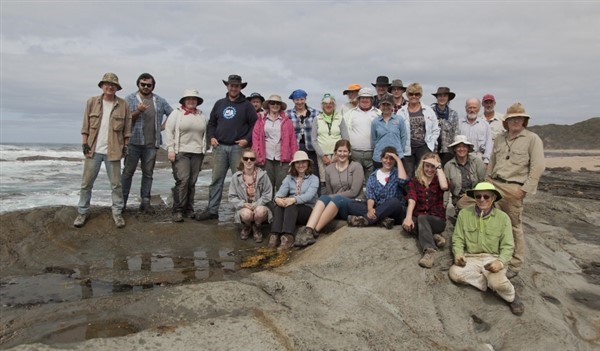
Dinosaur Dreaming - Eric the Red West Week 1 crew.
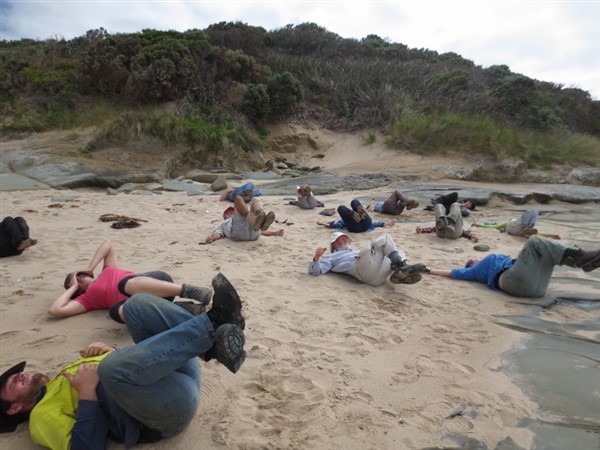
The crew doing their early morning warming up exercises.
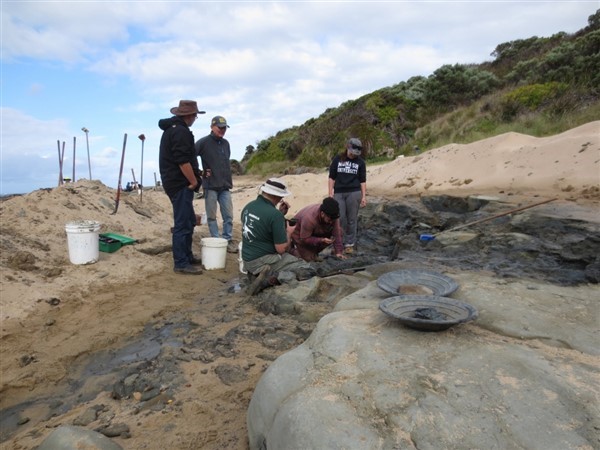
The excavation site, where the fossil layer is removed.
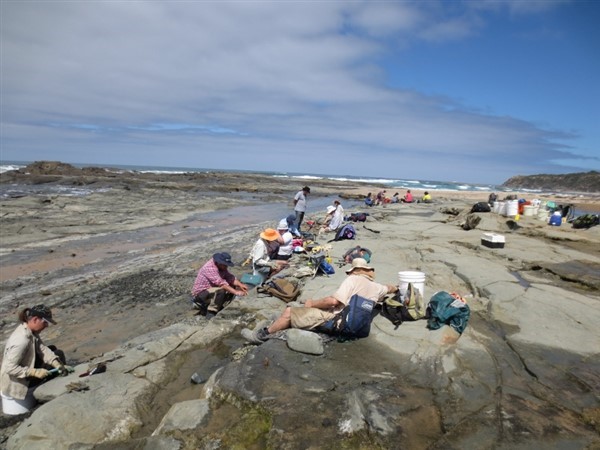
The crew at their rock breaking stations.
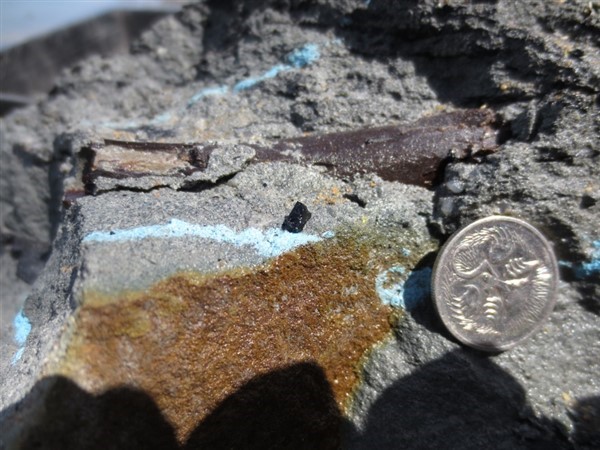
A small dinosaur limb bone.
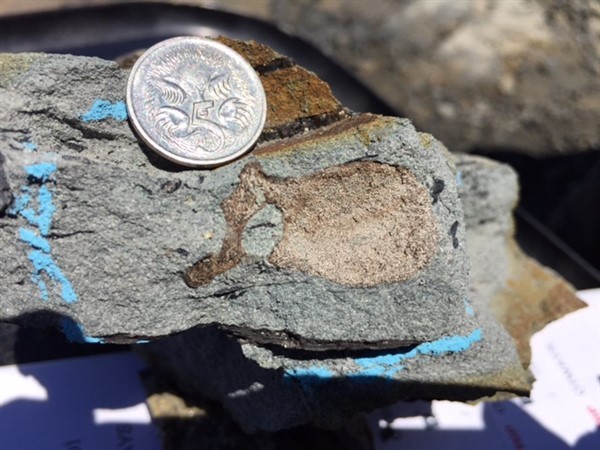
Cross-section through a dinosaur vertebra.
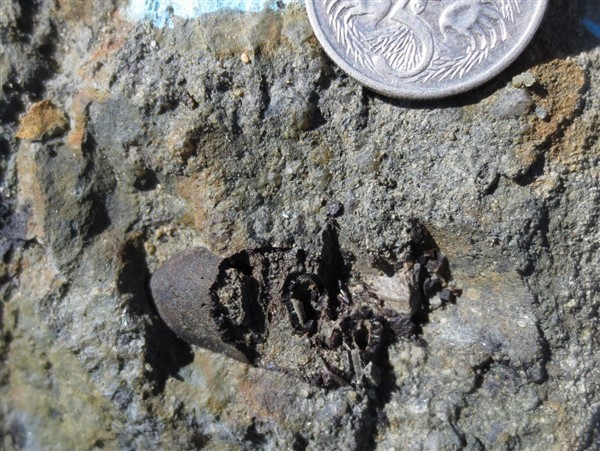
Cross-section through an ornithopod dinosaur lower jaw (two teeth in cross-section in the jaw).
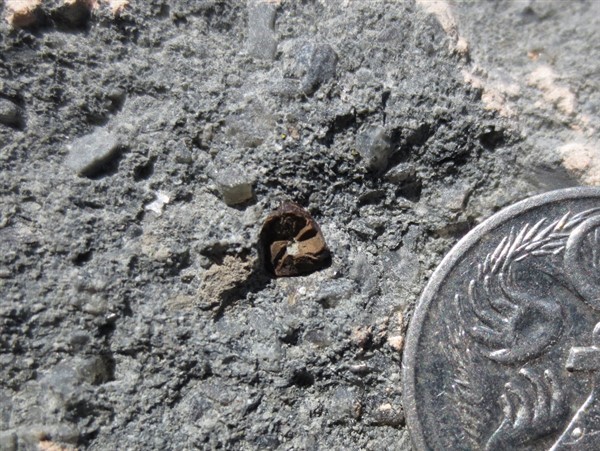
Cross-section through an ornithopod dinosaur tooth.
visits